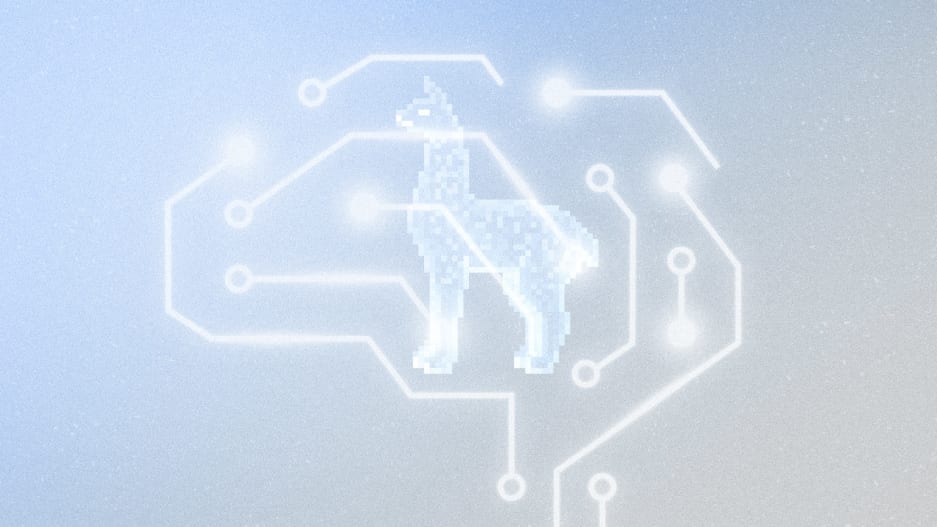- | 9:00 am
Meta’s Llama 2 LLM could be a major challenger to OpenAI
Meta says it’s partnered with Microsoft to make make Llama 2 easily accessible from the Microsoft Azure cloud.

Meta has released a new set of large language models (LLMs), collectively called Llama 2, that could challenge the leading OpenAI GPT-4 model in language performance, and Meta is open-sourcing the new models so that companies can build their own custom models on top of them for free. Meta says it’s partnered with Microsoft to make the Llama 2 models easily accessible from the Microsoft Azure cloud.
The pretrained and fine-tuned Llama 2 models range in size from 7 billion to 70 billion parameters (the weighted mathematical equations at each point in a neural network). “Our models outperform open-source chat models on most benchmarks we tested,” the Llama 2 research paper abstract reads, “and based on our human evaluations for helpfulness and safety, may be a suitable substitute for closed-source models.” Read “closed-source” to mean similar language models from OpenAI and Google.
Meta tells Fast Company that the Llama 2 models were trained on 40% more tokens (words or word parts) than the original Llama 1 models, and can read and remember far longer prompts—up to 4,000 tokens.
Meta has a large and powerful AI research organization and ample cash to support its work and recruit the best AI talent. The company has been working on its own large language models for years, but has chosen to open-source many of its models rather than charging other companies for access to them, as OpenAI does. App developers and enterprises often pay to access OpenAI’s language models via an application programming interface (API), or as a cloud service in Microsoft Azure.
Amid the current AI arms race, when most AI developers are becoming increasingly secretive about their methods, Meta has released a research paper about the development of Llama 2 that includes the parameter weights and starting code for various versions of the models. However, the research paper doesn’t include enough detail for developers to repeat the exact training and human coaching methods it used to train Llama 2.
Llama 2 is already getting high marks from the open source community for its performance and flexibility. “The base model seems very strong (beyond GPT-3) and the fine-tuned chat models seem on the same level as ChatGPT,” Hugging Face machine learning scientist Nathan Lambert wrote in a blog post Tuesday. “It is a huge leap forward for open-source, and a huge blow to the closed-source providers, as using this model will offer way more customizability and way lower cost for most companies.”
However, some have pointed out that Llama may not yet be a challenger to OpenAI’s models in all areas—coding, for instance. “On ‘HumanEval’ (standard coding benchmark), it isn’t nearly as good as StarCoder or many other models specifically designed for coding,” tweets Nvidia Senior AI Scientist Jim Fan. “That being said, I have little doubt that Llama-2 will improve significantly . . .”
Meta’s increasingly close relationship with Microsoft could also have implications for OpenAI, which is partly owned by Microsoft and relies heavily on Microsoft’s Azure servers for the massive compute power needed to run its AI models.
Developers will now be able to choose Llama 2 from the Azure AI model catalog and begin building on it; the resulting custom models will be hosted in the Microsoft cloud. And they’ll be able to use the content filtering and other safety tools available in the Azure cloud, Meta says, adding that Llama 2 is “optimized to run locally on Windows.” However, Llama 2 is not exclusive to Azure—it’ll also be available through Amazon Web Services, Hugging Face, and others.
Meta again signaled its ambition to seriously challenge OpenAI and Google last week when it announced a new text-to-image model called CM3leon that generates images from text prompts at high quality, as well as writes captions for existing images.
Meta and Microsoft partnered in 2022 to bring Microsoft’s productivity and collaboration apps into Meta’s “metaverse” experiences in its Quest VR headsets.






































